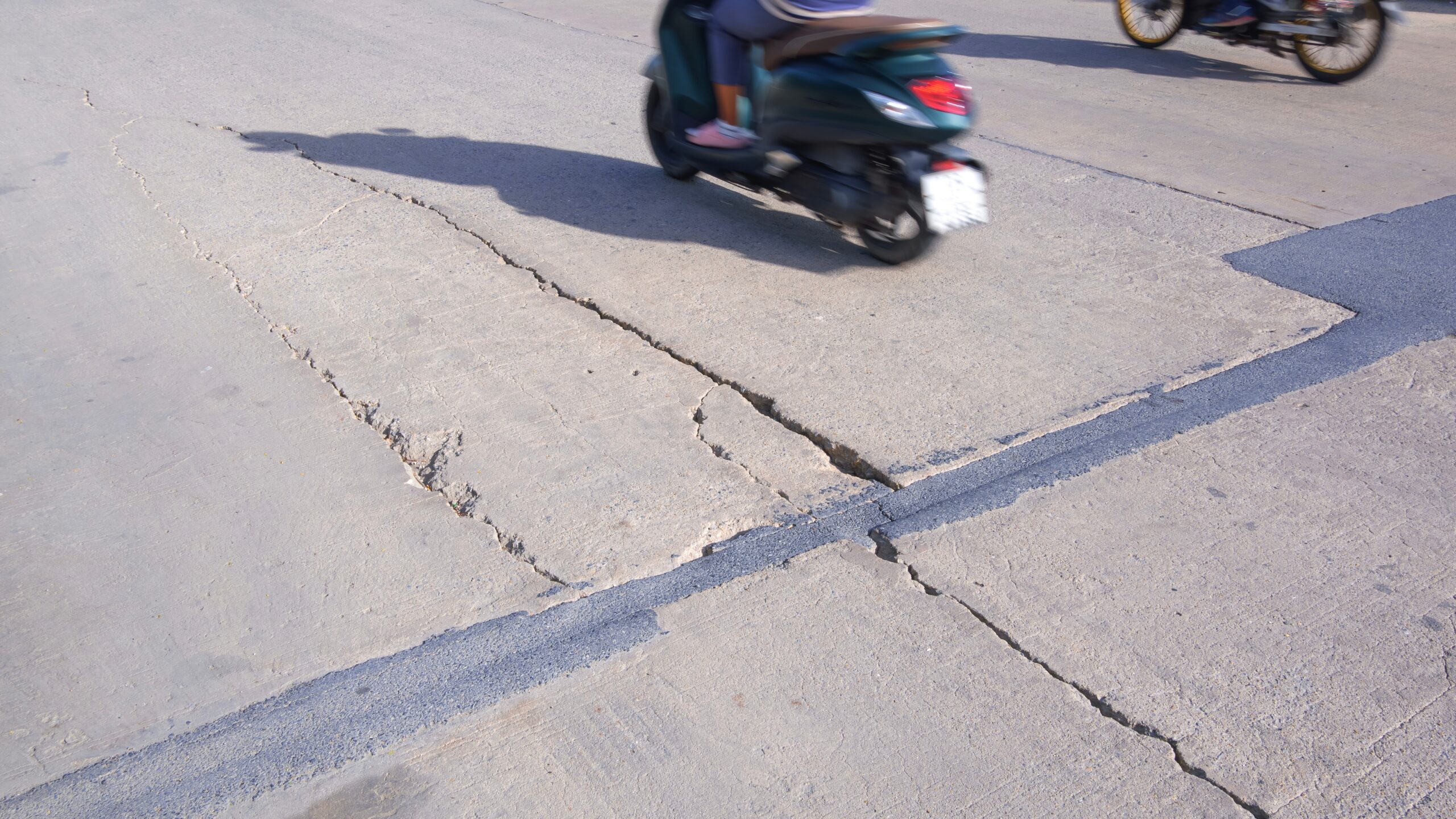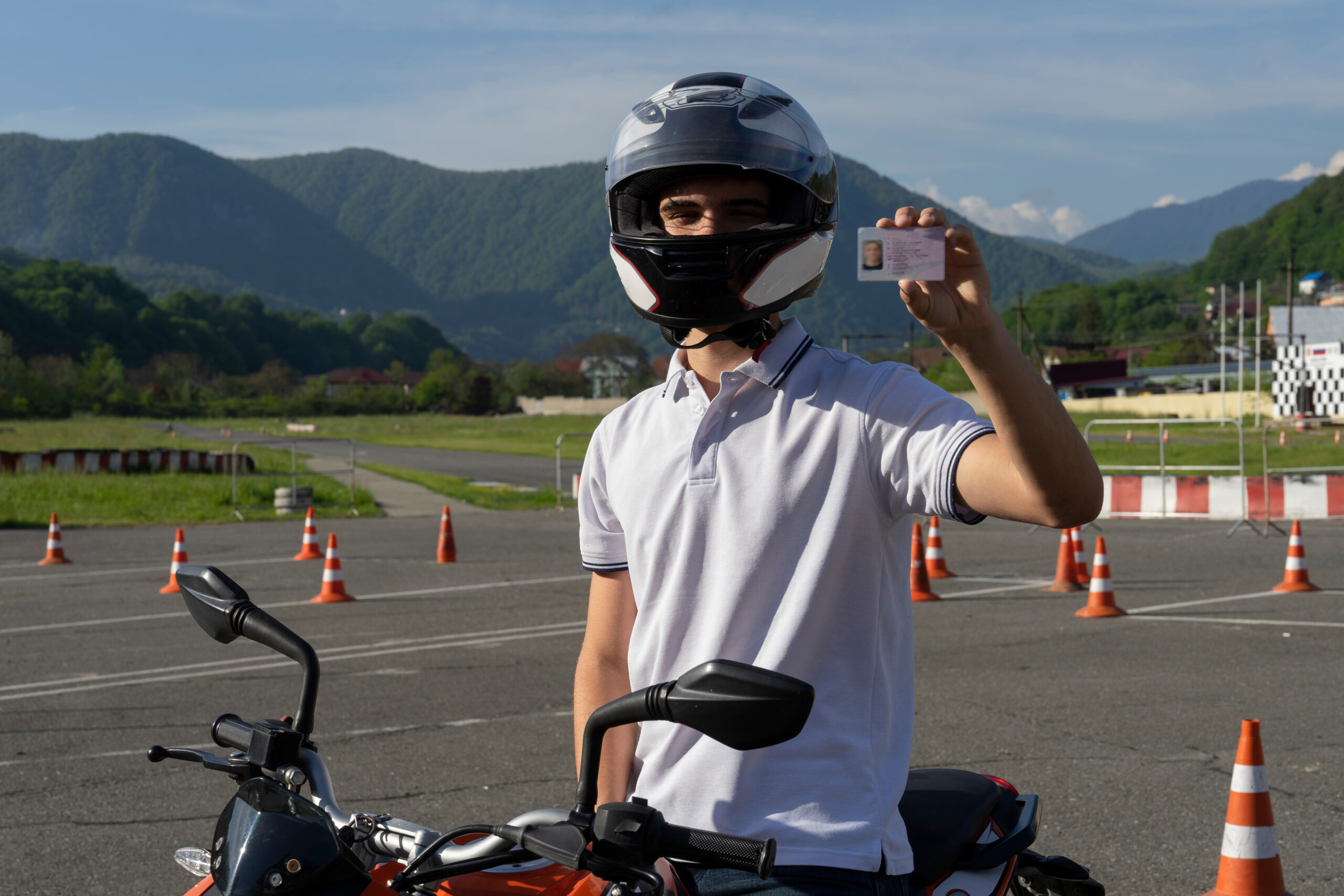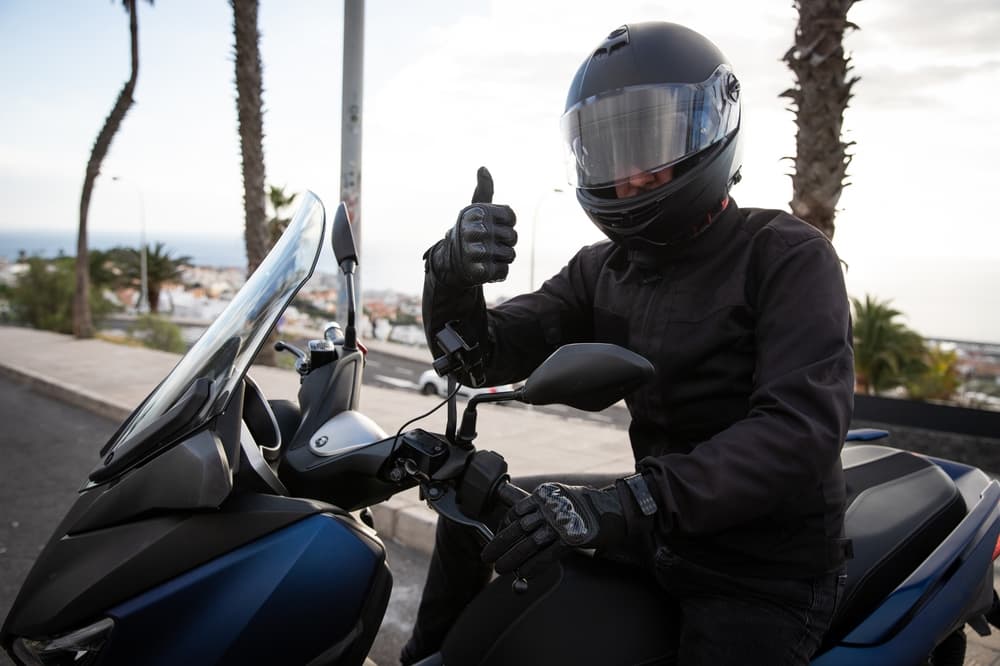Motorcycle Lane Splitting in California
For most, lane splitting is something of a gray area. Is it legal for motorcyclists to ride in between lanes in California? If so,
when are they permitted to do so?
Yes, motorcyclists are generally permitted to ride between lanes. In fact, California has some of the clearest lane-splitting laws in the nation. Generally speaking, motorists have the onus to avoid striking lane-splitting motorcyclists.
What Is Lane-Splitting?
California Vehicle Code § 21658.1(a) defines lane splitting as driving a motorcycle, as defined in Section 400, that has two wheels in contact with the ground, between rows of stopped or moving vehicles in the same lane, including on both divided and undivided streets, roads, or highways.

In other words, lane splitting involves a motorcyclist driving in the area between lanes rather than in a single lane. The motorcyclist may technically move between two lanes, but the intent is clear - to move between stopped or slow-moving vehicles without striking them.
Why Do Motorcyclists Split Lanes?
Motorcyclists may split lanes because:
- They can do so in a safe manner
- Splitting lanes will allow them to move through a traffic jam
Splitting lanes may help traffic congestion, as it reduces the total number of motorists sitting in traffic.
Is Lane-Splitting Legal in California?
California Vehicle Code § 21658.1(a) legalized lane splitting in California. Motorcyclists can drive in between other vehicles, so long as they do so in a safe manner.
Lane Splitting Can be Safe
To split lanes safely requires cooperation between motorcyclists and motorists. The
California Highway Patrol (CHP) provides tips for safe lane splitting:
Motorcyclists must only split lanes if conditions are right. Lane splitting is generally only safe if:
- There is sufficient space between vehicles the motorcyclist is splitting
- There is sufficient visibility to split vehicles
- Vehicles are traveling slowly or not at all, as the danger of splitting lanes increases as overall speeds increase
- The vehicles the motorcyclist is splitting are passenger vehicles
Large
trucks, vehicles without functioning side mirrors, motor homes, and certain other vehicles may have significant blindspots. If possible, motorcyclists should avoid splitting lanes between such vehicles.
Motorcyclists must also maintain control as they split vehicles. The margin for error when riding between two vehicles is slim.
Motorists pose the greatest risk to motorcyclists. The
National Highway Traffic Safety Administration (NHTSA) explains that motorists cause most accidents. Motorists may cause most lane splitting accidents, too.
A motorist who wants to avoid causing a lane splitting accident will:
- Know that lane splitting is legal in California
- Look out for lane-splitting motorcyclists
- Remain calm when a lane-splitting motorist is oncoming
- Check mirrors and blind spots before changing lanes
- Wait to change lanes if a lane-splitting motorcyclist is oncoming
- Use turn signals before changing lanes
- Refrain from opening their door when a motorcyclist is oncoming
Motorists must also engage in best driving practices, irrespective of a motorcyclist’s lane splitting.
Driving drunk, while on drugs, while distracted, or in any dangerous manner puts others at risk. If such dangerous behaviors led to a lane-splitting accident, the motorcyclist can hold the negligent motorist liable.
Motor vehicles far outweigh motorcycles. When the two collide,
motorcyclists generally suffer serious injury or death. All drivers must keep this in mind, paying attention to motorcyclists and avoiding collisions.
Who Is Liable for a Lane-Splitting Accident in California?
This depends on the specifics of the accident. Details always matter. So long as the motorcyclist did not drive into a stopped vehicle, they can generally hold the driver of a motor vehicle liable.
Instances Where a Motorist May Be Liable for a Lane-Splitting Collision
Lane-splitting accidents happen in vastly different ways. Your attorney will speak with you to gather the details of your accident—these are the facts that matter most. Some common scenarios illustrate liability for lane splitting, though.
Some cases where a motorist may be liable include:
- A motorist changing lanes in front of a lane-splitting motorcyclist, hitting the motorcyclist, or causing the motorcyclist to hit their vehicle.
- A motorist makes a sudden change of direction, causing the lane-splitting motorcyclist to lose balance or swerve and collide with another object.
- A motorist unwittingly crossing the lane divider, obstructing the path of lane-splitting motorcyclists.
- A motorist making a dangerous turn without checking blind spots, getting in the way of a lane-splitting motorcyclist.
There are countless scenarios where a motorist can cause a lane-splitting accident. When these accidents occur, a central question arises: was the motorist negligent?
Negligence as a Standard of Liability in Lane-Splitting Accidents
Negligence is a common liability standard in civil cases. Negligence occurs when someone engages in unreasonable behavior. Someone can also be negligent if they unreasonably
fail to act. Any action that puts a lane-splitting motorcyclist at risk may qualify as negligence.
Your attorney may prove negligence by:
- Establishing that the defendant in your case owed you a duty of care
- Proving that the defendant violated their duty of care in some way
- Establishing negligent behavior as the cause of your lane splitting accident
- Proving the damages you’ve suffered because of your lane-splitting accident
A motorist may not be the only party liable for your accident. Say lane-dividing lines were faded or not present at the time of your accident. The organization responsible for providing those lane dividers—a municipality, perhaps—may be liable for certain damages. If a vehicle defect led to your accident, then a manufacturer may be liable. Attorneys must assess liability on a case-by-case basis.
Should You Hire a Lawyer After a Lane-Splitting Accident in California?
Hiring an attorney is in your best interests, as a
motorcycle accident attorney will move your case forward as swiftly as possible and protect your rights. Most importantly, your attorney will seek the settlement or judgment you deserve.
Motorcycle accident cases can be complex. The issue of lane-splitting may introduce further complications, as it’s not always obvious who is at fault. An experienced attorney will present the strongest case that they possibly can.
Your attorney may assist you by:
- Completing a thorough investigation of your accident
- Identifying any liable motorists (and other liable parties)
- Identifying your losses and determining their monetary value
- Hiring any experts who can assist in your case
- Filing all case-related paperwork
- Completing settlement negotiations
- Completing any necessary trial
An attorney will lead your case while you recover. You don’t have to seek justice on your own.
 In other words, lane splitting involves a motorcyclist driving in the area between lanes rather than in a single lane. The motorcyclist may technically move between two lanes, but the intent is clear - to move between stopped or slow-moving vehicles without striking them.
In other words, lane splitting involves a motorcyclist driving in the area between lanes rather than in a single lane. The motorcyclist may technically move between two lanes, but the intent is clear - to move between stopped or slow-moving vehicles without striking them.


